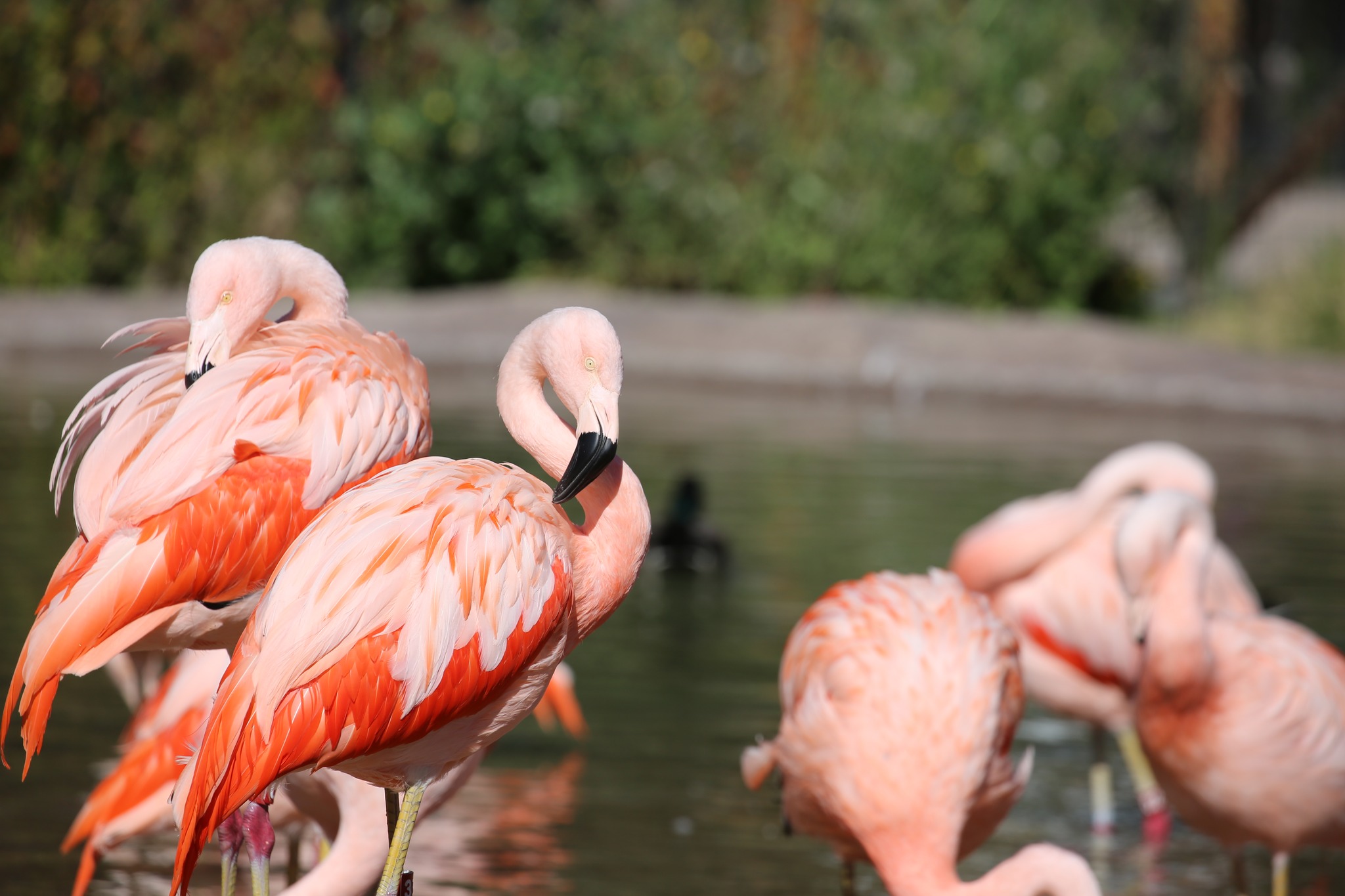– The diversity of flamingo species, with a focus on the three found in the Andes Mountains
– The harsh and varied habitats these Andean flamingo species navigate
– The conservation challenges facing Andean flamingos and the importance of programs like the Andean Highland Flamingo SAFE
– The role of zoos, like Reid Park Zoo, in supporting conservation and education efforts
– Adaptations and behaviors of the Chilean flamingo as a representative Andean species
Flamingos are among the most recognizable and striking birds in the world, and South America’s Andes Mountains are home to a remarkable diversity of these birds. Of the six known flamingo species, three grace the majestic Andean landscape: the Chilean flamingo (Phoenicopterus chilensis), the Andean flamingo (Phoenicoparrus andinus), and the Puna, or James’s flamingo (Phoenicoparrus James). These species captivate observers with their vibrant plumage, uniquely structured beaks, and complex social behaviors. Here at Reid Park Zoo, we celebrate the presence of the Chilean flamingo, a species that exemplifies the resilience and beauty found throughout the flamingo family.
Habitat variations in the Andes offer a strong testament to the adaptability of flamingos. These birds occupy territories ranging from the coastal lowlands to the oxygen-thin altitudes of over 4,500 meters. The Chilean flamingo, for instance, can tolerate the extreme temperatures of its habitat, which fluctuate between near-freezing to scorching highs. This adaptability extends to their diverse diet, consisting of algae, diatoms, insects, and crustaceans, which the flamingos filter from the water with their specially adapted beaks.
However, the story of Andean flamingos is not just about adaptability and striking features but also about vulnerability. The continued existence of these species faces significant threats from mining activities, habitat loss, and climate change, leading to fluctuations and declines in their populations. Therefore, conservation initiatives, such as the Andean Highland Flamingo SAFE program, are critical. They bring experts worldwide to research and create strategies to protect these birds. Individuals contribute to the global effort to safeguard these species by visiting institutions like Reid Park Zoo.
Zoos play an essential role in flamingo conservation through breeding programs, scientific research, and public education. Establishing captive populations can protect against extinction while providing valuable opportunities to study flamingo health, behavior, and genetics. Moreover, education programs raise public awareness about flamingo conservation and inspire action to preserve their wild habitats.
As residents of the Reid Park Zoo, Chilean flamingos serve as ambassadors for their species. Their resilience to wide temperature ranges is mirrored by behavioral and physical adaptations that are fascinating to behold. For instance, the flamingo’s iconic standing on one leg may help to conserve body heat in cold environments. Their vivid pink coloration results from carotenoids in their diet, and their colony formations facilitate complex social interactions, such as synchronized mating displays—an enthralling spectacle for any onlooker.
Delving into the lives of these flamingos in the Andes Mountains reveals that the Andean Highland Flamingo SAFE program’s work is essential. Dedicated professionals conducting research and fieldwork are instrumental in reversing the decline of these magnificent birds. Reid Park Zoo supports such initiatives, reinforcing the global network of institutions committed to wildlife conservation.
A visit to the Zoo not only provides a glimpse into the enchanting world of flamingos but is also a step forward in the collective effort to preserve our planet’s vibrant biodiversity. Educational encounters foster a deeper understanding of these birds and their ecological challenges, empowering guests to become part of the conservation solution.
The Andean flamingos’ tale is one of beauty, adaptability, and fragility. It underscores the need for continued conservation efforts and the role that each of us can play in protecting these irreplaceable avian treasures. Through engagement, education, and partnership, we can work towards a future where flamingos continue to color the skies and waters of the Andes Mountains.
*****
Source Description
that three of the six flamingo species are located in the Andes Mountains in South America? We’re proud to have the Chilean flamingo species at Reid Park Zoo. Their wild counterparts in Chile can be found in various elevations and temperatures, from anywhere in the low 20°F to the higher 110°F.
🦩 We support our partners in the Andean Highland Flamingo SAFE program, who gather the top minds around the globe to research and implement strategies to stop the decline of the three flamingo populations in the Andean Highlands. By visiting the Zoo, you are a part of conservation efforts for these colorful birds.

